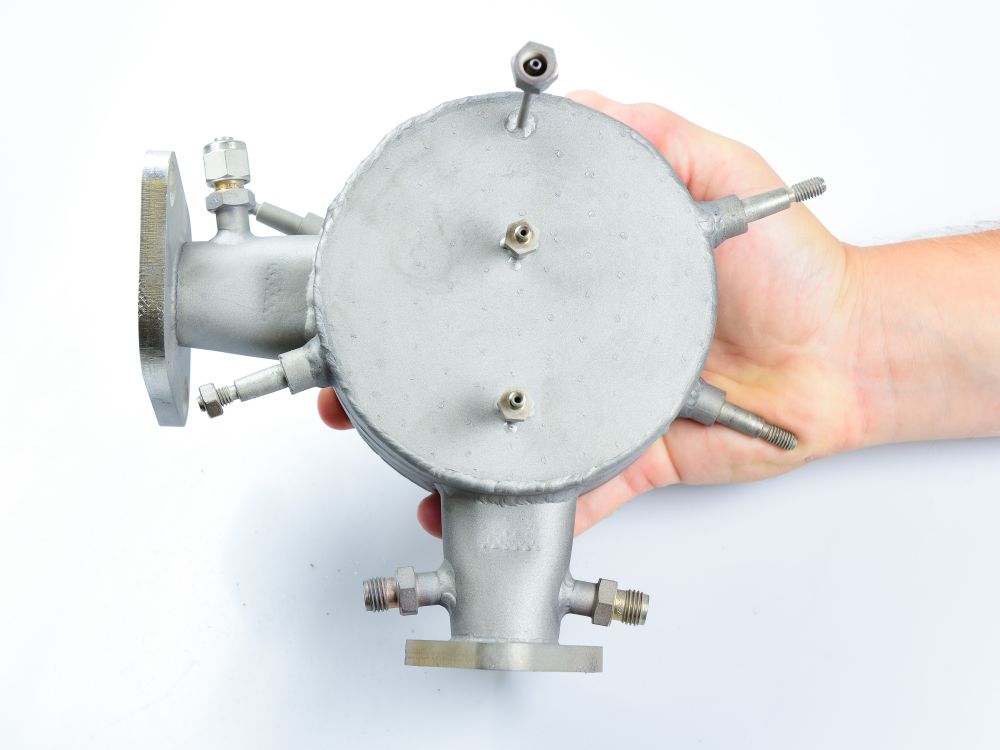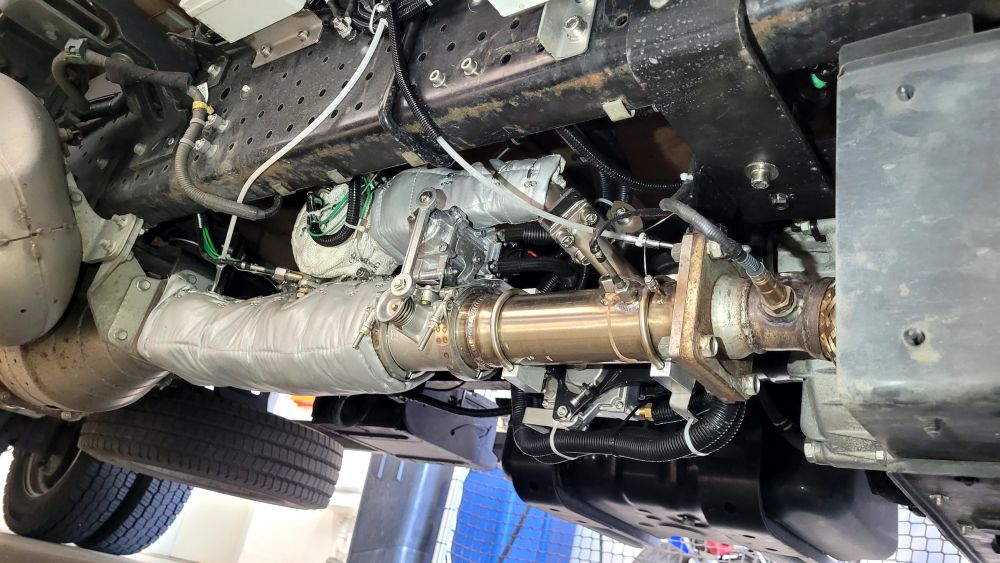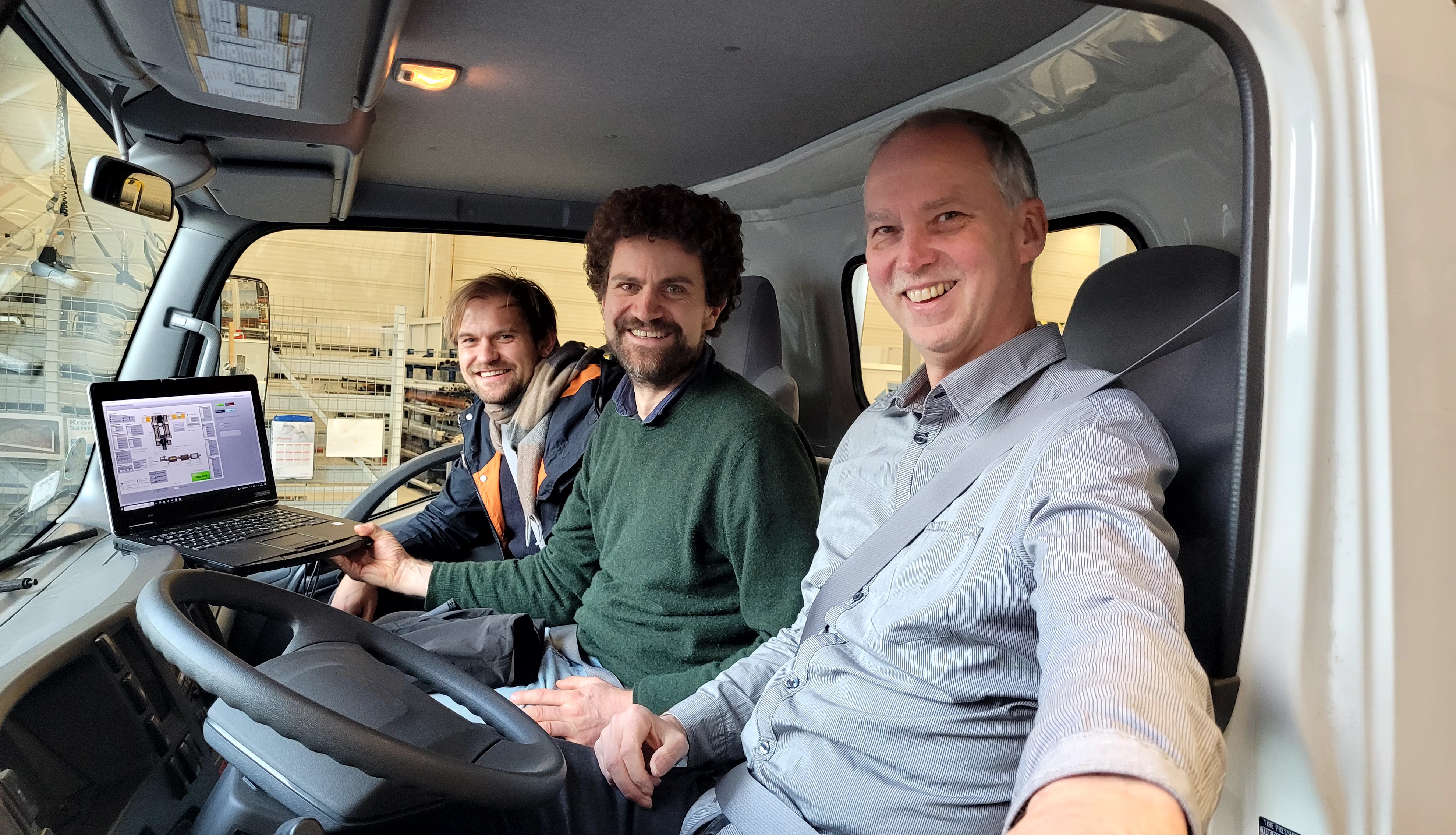The CatVap® technology (CATalytic eVAPoration process) for fuel treatment developed and patented by Fraunhofer ISE serves to reduce local emissions (NOx, soot, etc.) from combustion engines and to efficiently reform fuels and energy sources. Using renewable fuels, the fuel-flexible heating technology thus enables a virtually emission-free vehicle (well-to-wheel approach). Fraunhofer ISE has developed the system from laboratory prototype to real use on the road.
CatVap® – Fuel-flexible Heating Technology to Reduce Emissions from Combustion Engines
At a Glance
- CatVap® reduces greenhouse gas and pollutant emissions from combustion engines
- CatVap® heats up the exhaust gas aftertreatment system in just 20 seconds
- With the heated exhaust system, pollutant emissions - especially nitrogen oxides - can be almost completely removed
- No additional fuel consumption
- Fuel-flexible: can be used for diesel, biofuels or e-fuels
- Patented technology applied in commercial vehicles for 10,000 kilometers together with the company Albonair GmbH
Challenge:
If vehicles with combustion engines drive at very low speeds and correspondingly low exhaust gas temperatures, for example, today's Euro VI exhaust gas purification system cannot fully reduce harmful nitrogen oxide emissions. Improving the cold-start capabilities of combustion engines is a basic prerequisite for compliance with future emissions legislation. New fuel treatment technologies are needed that are both ecologically and economically sustainable.
Solution:
The CatVap® fuel treatment technology can be connected directly after the engine and before the exhaust gas aftertreatment system. By equipping the exhaust gas aftertreatment system with CatVap®, only 20 seconds of electrical heating are required to start the Catvap® process during a cold start: CatVap® heats the exhaust gas aftertreatment system quickly and efficiently with chemical energy. This process exceeds the performance of conventional electrical heating by more than 20 times. With the heated exhaust gas system, pollutant emissions - especially nitrogen oxides - can be almost completely removed. The heating technology is so efficient that it can achieve this reduction in emissions without additional fuel consumption.
The technology is fuel-flexible and can also be used with electricity-based fuels (e-fuels) and biofuels such as hydrogenated vegetable oils (HVO) in addition to normal diesel fuel without modifications.
Objective:
The aim of the new CatVap® technology is to substantially reduce greenhouse gas and pollutant emissions, such as nitrogen oxides, primarily in the area of commercial vehicles, but also off-road vehicles and ships. CatVap® has great potential to reduce secondary emissions without additional measures according to the Euro 7 / VII emissions limits introduced 2026.
The combination of renewable fuels and a robust heating technology such as CatVap® is necessary in order to achieve the reduction targets for CO2 emissions quickly and efficiently.
Implementation:
The experts in the Sustainable Synthesis Products business unit at Fraunhofer ISE have developed and patented CatVap®.
The fuel treatment technology was then successfully tested in pilot projects together with Albonair GmbH, a company with expertise in exhaust gas aftertreatment, as a heating and heat retention measure and as a diesel particulate filter regeneration system on commercial vehicle engines.
The technology is also convincing on the road: the system was installed behind the engine of a truck with a permissible total mass of 12 tons and demonstrated an effective reduction in pollutants during various demanding test drives. Together with ambitious truck manufacturers, Fraunhofer ISE and Albonair GmbH now want to drive forward the goal of a product ready for series production.
Would you like to bring CatVap® into your application? Together with ambitious truck manufacturers, we would like to develop and market products ready for series production.


